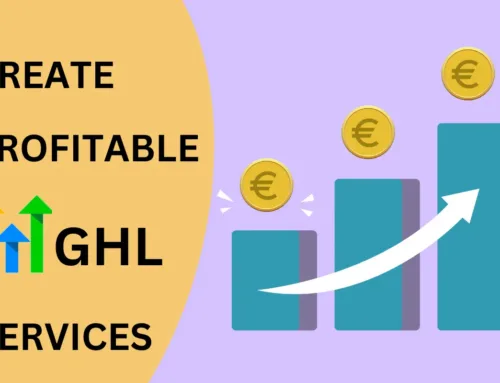Simple SEO tasks? Is there even such a thing? Search engine optimization, SEO for short, might sound like a complex subject, but in actuality, SEO is a pretty simple concept to both grasp and work with. In fact, you can think of SEO as crossing your t’s and dotting your i’s along with keeping your work space clean and clutter free. Now don’t get me wrong, my analogy is in no way saying that SEO is that easy. A lot of the time you will have to call in an SEO expert, but, there are plenty of basic tasks that you can do that will increase your site’s overall rating on any search engine.
In today’s article, I am going to go through five basic tasks you can do to help get you noticed on any search engine. I’ll also add a little insight into how search engines work as well.
1) Choosing Your Words Carefully…
The most basic of basic SEO tasks you can do is choosing your words carefully. Search engines work by scanning and then analyzing each of your website’s pages. Its main job is to look for the words you’ve used repeatedly and marks them as key words.
Now think of key words as like a bookmark in a very large and extremely thick book. That bookmark makes it easy to go to the page you want, but there is a catch – the more distinct key words you use the better you’ll be able to see the bookmark.
So, the key (pun intended) to working with key words is to have a solid list of unique key words. Now this might seem a bit scary and too much as it asks – how many words should I have and how do I know if they’re unique or not.
When it comes to how many key words you should use you should keep in mind a couple of things. One key word isn’t going to cut it even if that word is highly ranked. The reason for this is because it doesn’t narrow the search down. For example, search for “music” on Google and it gives me a wide range of results of what music is and what it can do. If I add “classical” to my search then it gives me a narrow list of topics about classical music, and if I add “Beethoven” to my search then it gives me an even narrower list of topics about Beethoven and his classical music.
In short, we need more than just one key word but at the same time you don’t want to flood your site with a lot of key words, nor do you want to repeat the same keyword over and over in rapid succession. Look at the following example below:
Do you love classical music? A lot of people love classical music. We here at the classical music website love classical music so much that we’ve made the classical music website to help those who love classical music.
Some websites try to cram as many keywords into their website as humanly possible so they can get noticed. This method use to work a long time ago but it created a lot of problems for search engines. So, developers at Google, Yahoo, Bing, and so on have updated their algorithms that ignore, and in some cases black list, those sites.
In all, you want to have maybe 10 to 20 key words that you sprinkle on each page carefully.
What about discovering how unique your key words are. This might sound labor intensive but there are plenty of tools out there today that can help you find out the strength of your keywords like Word Tracker or Google Alerts. WordPress also comes with its own keyword tracker plugins like Rank Tracker. Links are listed below.
Now I know what you’re thinking – I thought you said this was going to be a basic task. Now I don’t blame you for thinking that after reading through what I’ve just posted, but, there is something you can do to take what I’ve said and make it a basic task, and that is – add a blog. WordPress was of course designed for bloggers, but over the years it has become a foundation that builds beautiful websites of all shapes and sizes. Still, at its core it is something that was made for bloggers. If you add a blog that has the keywords you came up with then it increases your chances of getting more noticed on search engines.
One handy tool to help you track your rankings right inside of your WordPress Dashbaord: Wincher Rank Tracker
2) Your graphics…
Roughly twenty years ago, the idea of finding pictures through a search engine was a notion that a lot of people didn’t think possible. After all, search engines focus on a website’s words and not its pixelated images. Times change though and this is especially true with technology as it changes quite frequently. Today, we can find pictures on any search engine. True, we can’t find the exact images that we’re looking for but we can get a best guess.
Above is your basic run of the mill image tag that we’ve written in one form or another who knows how many times. Now some of us have left the alt tag empty or didn’t add it to the image tag as we really don’t think about it or simply skip all together. The alt attribute helps with letting your traffic know what images you’re using in case they can’t see them or are using screen readers. The alt attribute plays a strong role in finding images whenever someone does an image search. So, fill out the alt attribute. Make sure that you give it a keyword or two as that will help as well.
There are WordPress plugins that help you to insert SEO friendly keywords into your image tags. Their links are listed below.
3) Metadata
Remember what I had said before about crossing your t’s and dotting your I’s? Well, working with your site’s metadata is pretty much like that.
Metadata is essentially saying to search engines – this is my website, this is what it is all about, these are its keywords, and the website was developed by <insert name here> Metadata is always placed within the head tags of your website. Also, inserted into your head tag is the title tag. Now the title tag is another thing you need to consider as a good title description can help with your SEO. The only problem is that manipulating your title and metadata tags is a bit difficult based on your skill level.
Thankfully, WordPress has plugins that deal with this like Yoast. This plugin allows you to add metadata to your site without having to search for it through your WordPress files. Yoast is also popular for handling other SEO tasks. But don’t let a plugin stop you from learning more about and working with SEO.
4) Make Sure All of Your Pages are on the Same Page
Think of search engines as snow balls. It starts with one page, scans it, analyzes it, and it looks for page links to follow. It gathers more and more information as it keeps moving and that helps it to index your site well and that in turn makes it easier to find. It will only stop if there are no more links for it to follow.
So, make sure that all of your page links work. Any broken links should be replaced immediately or given a redirect to a 404 page. Make sure that your outside links are to websites that follow the essence of your website. For example, it makes sense to have your golf website link to other golfing websites.
Also, your pages should keep in the spirit of the website itself. For example, it makes sense that each of your pages talks about golf in some form or another. Those pages should also use the key words and phrases that you came up with.
Update your pages as often as you can with new content. The time between each update should be based on the essence of the website itself. For example, if your website talks about fashions from New York or Paris then you might have to update your site daily. On the other hand, if your website is about conventions in your area then you might have to update your site a few times a year.
5) Reduce Page Load Time
We live in the age of lightning fast Internet speeds, but the speed your traffic follows can stop dead rather suddenly if your website takes forever and a day to load. I had a client that had a Mexican restaurant website that loaded up very, very slowly. The reason? His page had a considerable amount of YouTube videos playing. Along with that he had some JavaScript effects and CSS animation going on. Naturally this made going through his site painful as it felt like I was walking through some quicksand.
It’s always good to ensure that your website can load as quick as it can for your traffic. If they can’t view your site quickly then they’ll go away. How fast your site loads determines its ranking on any search engine result page.
What can you do to speed up your site’s load time? Don’t go overboard with videos and graphics. Decide which graphics format to use for the images you use – jpgs take up less space than PNGs but PNGs show more quality. If you use JavaScript or PHP then keep their effects at the bare minimum. Use less intense fonts. Use free online diagnostic tools like pingdom to see how it loads your site and follow what advice they give.
In Conclusion
SEO does sound complex but it is a simple enough concept to understand – just cross your t’s and dot your i’s and make sure your work space is both clean and organized. Successful websites out there today put a lot of time and effort into improving their overall SEO rating. If you run a business online then SEO is essential for generating profit and staying ahead of your competition, and I’ve posted a link to one of our articles that goes into more detail about this. In short, Search Engine Optimization is a necessity that you at least need to be aware of.
Sometimes you’ll have to call in an SEO expert for their services, but the Internet does make basic SEO tasks a reality. WordPress has plenty SEO support. There are also plenty of online tools that can help as well. Then again you can always go with an expert if you feel that you should. It doesn’t matter if you’re doing this on your own or letting someone else take charge, WordPress will still have your back.
Thanks for reading!





Very precisely explained. nice and quick read article.